GIKI, Topi, Pakistan | December 02-04, 2025

keynote speakers
Click on a picture to view talk abstract.Title: Enabling Materials for Quantum Information at Room Temperature
Dr. Ian Ferguson
Professor, Department of Electrical and Computer Engineering
FRSA - Fellow of AVS, IEEE, IOP, OSA, SPIE and CPhys
Southern Polytechnic College of Engineering and Engineering Technology, Kennesaw State University, Marietta, GA 30060, USA
Co-authors: S M Atiqur Rahman, Oded Ravid, Vishal Saravade, Manika Tun Nafisa, Zhe Chuan Feng, Na Lu, Benjamin Klein, and Ian Ferguson
Professor, Department of Electrical and Computer Engineering
FRSA - Fellow of AVS, IEEE, IOP, OSA, SPIE and CPhys
Southern Polytechnic College of Engineering and Engineering Technology, Kennesaw State University, Marietta, GA 30060, USA
Co-authors: S M Atiqur Rahman, Oded Ravid, Vishal Saravade, Manika Tun Nafisa, Zhe Chuan Feng, Na Lu, Benjamin Klein, and Ian Ferguson
Abstract:
There is an increasing interest in materials for future computing needs, which are not met using conventional electronics. Quantum Information (QI) could enhance the functionalities, storage capabilities, and data manipulation and transmission for the next generation of devices. Spintronics is an enabling technology that meets the speed, power, and scalability requirements for quantum information. Spin of a material is directly related to magnetic, electrical, and optical properties. However, most materials show conducive properties for spintronics only at cryogenic temperatures, which limits their practical applications. There is a need to investigate spintronic materials for these applications at room temperature (RT).
There is an increasing interest in materials for future computing needs, which are not met using conventional electronics. Quantum Information (QI) could enhance the functionalities, storage capabilities, and data manipulation and transmission for the next generation of devices. Spintronics is an enabling technology that meets the speed, power, and scalability requirements for quantum information. Spin of a material is directly related to magnetic, electrical, and optical properties. However, most materials show conducive properties for spintronics only at cryogenic temperatures, which limits their practical applications. There is a need to investigate spintronic materials for these applications at room temperature (RT).

Dr. Ian Ferguson
This paper will provide an overview to show the potential of wide bandgap semiconductor materials as an emerging technology for quantum information. One such material system is the III-Nitrides, and, for example, GaN doped with transition metal or rare earth elements has the potential for controllable spin and charge for spintronics at RT. Gadolinium-doped GaN grown using MOCVD has been shown to have ferromagnetism at RT that is intrinsic and free-carrier mediated. However, only GaGdN grown using a precursor, which contains oxygen in its organic ligand that is incorporated in the GaGdN exhibited ferromagnetism. Magnetic, structural, and electrical properties of GaGdN grown with different chemistries and implanted with O or C are investigated in this work in order to gain a better understanding of the origin of ferromagnetism in GaGdN. Another approach is the use of II-VI semiconductor materials such as ZnO, which will also be reviewed. ZnO-based materials have an additional advantage that they are both earth-abundant and non-toxic. Understanding the RT ferromagnetism mechanism in these materials is essential to control the spin and build practical spintronic devices for Quantum Information applications at Room Temperature (QI@RT).
Speaker Biography:
Ian Ferguson is the former Dean of Southern Polytechnic College of Engineering and Engineering Technology at Kennesaw State University. His research expertise is in compound semiconductor materials and devices for sensors, illumination, energy harvesting, and spintronics applications. He is an international educator and researcher with over 575 refereed journal publications, conference proceedings, books, book chapters, and patents. He is a Fellow of the Royal Society of Arts, Manufactures and Commerce (FRSA), the American Vacuum Society, the Institute of Electrical and Electronic Engineering, the Institute of Physics, Optica, the International Society for Optical Engineering, and a Chartered Physicist.
Ian Ferguson is the former Dean of Southern Polytechnic College of Engineering and Engineering Technology at Kennesaw State University. His research expertise is in compound semiconductor materials and devices for sensors, illumination, energy harvesting, and spintronics applications. He is an international educator and researcher with over 575 refereed journal publications, conference proceedings, books, book chapters, and patents. He is a Fellow of the Royal Society of Arts, Manufactures and Commerce (FRSA), the American Vacuum Society, the Institute of Electrical and Electronic Engineering, the Institute of Physics, Optica, the International Society for Optical Engineering, and a Chartered Physicist.
Title: Hierarchical control and operation of locally distributed energy resources for enhancing the bulk power grid reliability, resilience, security, and economics
Dr. Mohammed Shahidehpour
Fellow IEEE
Professor and Director
Robert W. Galvin Center for Electricity Innovation
Illinois Institute of Technology
Chicago, IL, USA
Fellow IEEE
Professor and Director
Robert W. Galvin Center for Electricity Innovation
Illinois Institute of Technology
Chicago, IL, USA
Abstract:
This technical presentation establishes a comprehensive foundation for a practical implementation of hierarchical ISO/DSO coordination mechanism that systematically unlock the full potential of local DERs and BTM resources in wholesale electricity markets. The proposed ISO/DSO coordination framework achieves an efficient integration of DERs by systematically transforming millions of small, variable, and distributed behind-the-meter resources into reliable, dispatchable market participants through VPP aggregation and DSO market mechanisms.
This technical presentation establishes a comprehensive foundation for a practical implementation of hierarchical ISO/DSO coordination mechanism that systematically unlock the full potential of local DERs and BTM resources in wholesale electricity markets. The proposed ISO/DSO coordination framework achieves an efficient integration of DERs by systematically transforming millions of small, variable, and distributed behind-the-meter resources into reliable, dispatchable market participants through VPP aggregation and DSO market mechanisms.

Dr. Mohammed Shahidehpour
This transformation directly enables seamless participation of DERs in wholesale electricity markets while preserving the computational efficiency and operational procedures that grid operators would require for system-wide optimization. The resulting integration of DSO creates a foundation for addressing the volatility of LMPs as one of the most pressing operational challenges in modern power systems. The successful integration work will enable the development of standardized protocols and market rules for hierarchical coordination, facilitating broader industry adoption while ensuring consistent implementation across different ISO and DSO jurisdictions. The presentation will discuss the DSO models and constructs and present the results for the ISO/DSO framework's performance under extreme operating conditions. The technical feasibility demonstrated in this presentation combined with substantial economic benefits provides compelling evidence for the coordination of ISO/DSO as a solution to the growing challenges of high renewable energy penetration and distributed resource proliferation throughout the world.
Speaker Biography:
Biography - Dr. Mohammad Shahidehpour is a University Distinguished Professor and Galvin Chair Professor in the Electrical and Computer Engineering Department at Illinois Institute of Technology (IIT). He also serves as the Director of the Robert W. Galvin Center for Electricity Innovation at IIT. He has over 45 years of experience with power system operation, planning, and control and has completed several major projects for the electric energy sector. His project on Perfect Power Systems has converted the entire IIT Campus to an islandable microgrid. Dr. Shahidehpour was the recipient of several technical awards including of the IEEE Burke Hayes Award for his research on hydrokinetics, IEEE/PES Outstanding Power Engineering Educator Award, IEEE/PES Ramakumar Family Renewable Energy Excellence Award, IEEE/PES Douglas M. Staszesky Distribution Automation Award, and the Edison Electric Institute's Power Engineering Educator Award. He has co-authored 6 books and over 1000 technical papers on electric power system operation and planning, and served as the founding Editor-in-Chief of the IEEE Transactions on Smart Grid. Dr. Shahidehpour is the recipient of the 2009 honorary doctorate from the Polytechnic University of Bucharest. He is a Fellow of IEEE, Chinese Society of Electric Engineers (CSEE), American Association for the Advancement of Science (AAAS), and National Academy of Inventors (NAI). He is an academician of the US National Academy of Engineering (NAE). He is also listed as a highly cited researcher on the Web of Science (ranked in the top 1% by citations demonstrating significant influence among his peers).
Biography - Dr. Mohammad Shahidehpour is a University Distinguished Professor and Galvin Chair Professor in the Electrical and Computer Engineering Department at Illinois Institute of Technology (IIT). He also serves as the Director of the Robert W. Galvin Center for Electricity Innovation at IIT. He has over 45 years of experience with power system operation, planning, and control and has completed several major projects for the electric energy sector. His project on Perfect Power Systems has converted the entire IIT Campus to an islandable microgrid. Dr. Shahidehpour was the recipient of several technical awards including of the IEEE Burke Hayes Award for his research on hydrokinetics, IEEE/PES Outstanding Power Engineering Educator Award, IEEE/PES Ramakumar Family Renewable Energy Excellence Award, IEEE/PES Douglas M. Staszesky Distribution Automation Award, and the Edison Electric Institute's Power Engineering Educator Award. He has co-authored 6 books and over 1000 technical papers on electric power system operation and planning, and served as the founding Editor-in-Chief of the IEEE Transactions on Smart Grid. Dr. Shahidehpour is the recipient of the 2009 honorary doctorate from the Polytechnic University of Bucharest. He is a Fellow of IEEE, Chinese Society of Electric Engineers (CSEE), American Association for the Advancement of Science (AAAS), and National Academy of Inventors (NAI). He is an academician of the US National Academy of Engineering (NAE). He is also listed as a highly cited researcher on the Web of Science (ranked in the top 1% by citations demonstrating significant influence among his peers).
Title: AI-Driven Innovations: Leveraging Large Language Models for Softwarized Network Management, Spine Disease Detection, and Academic Excellence
Dr. James Won Ki Hong
Professor,
Department of Computer Science and Engineering,
Pohang University of Science and Technology (POSTECH),
Pohang, Korea
Professor,
Department of Computer Science and Engineering,
Pohang University of Science and Technology (POSTECH),
Pohang, Korea
Abstract:
In this keynote, we explore the transformative potential of Artificial Intelligence, particularly Large Language Models (LLMs), across diverse domains such as network management, medical diagnostics, and academic peer review. We delve into how LLMs are revolutionizing network management by detecting faults in network devices and virtual network functions, and automating virtual network configurations. In healthcare, we examine their role in detecting causes of spine pain through advanced pattern recognition and data analysis. Finally, we discuss the application of LLMs in technical paper reviewing, where they assist in ensuring quality, originality, and relevance in academic research.
In this keynote, we explore the transformative potential of Artificial Intelligence, particularly Large Language Models (LLMs), across diverse domains such as network management, medical diagnostics, and academic peer review. We delve into how LLMs are revolutionizing network management by detecting faults in network devices and virtual network functions, and automating virtual network configurations. In healthcare, we examine their role in detecting causes of spine pain through advanced pattern recognition and data analysis. Finally, we discuss the application of LLMs in technical paper reviewing, where they assist in ensuring quality, originality, and relevance in academic research.
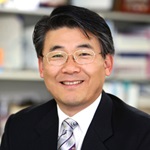
Dr. James Won Ki Hong
In this keynote, we explore the transformative potential of Artificial Intelligence, particularly Large Language Models (LLMs), across diverse domains such as network management, medical diagnostics, and academic peer review. We delve into how LLMs are revolutionizing network management by detecting faults in network devices and virtual network functions, and automating virtual network configurations. In healthcare, we examine their role in detecting causes of spine pain through advanced pattern recognition and data analysis. Finally, we discuss the application of LLMs in technical paper reviewing, where they assist in ensuring quality, originality, and relevance in academic research.
Speaker Biography:
James Won-Ki Hong is Professor in the Dept. of Computer Science and Engineering (http://cse.postech.ac.kr), Director of Center for Crypto Blockchain Research (http://ccbr.postech.ac.kr), and Director of Distributed Processing and Network Management Lab (http://dpnm.postech.ac.kr/) at POSTECH, Pohang, Korea. James worked as CTO and Senior Executive Vice President for KT from March 2012 to Feb. 2014, where he was responsible for leading the R&D effort of KT and its 50 subsidiary companies, and where he initiated R&D on SDN (Software-Defined Networking). He was Chairman of National Intelligence Communication Enterprise Association, and Chairman of Telecommunications Technology Association (TTA) Standardization Board in Korea. He was a co-founder and Executive Director of SDN/NFV Forum from Oct. 2014 to May 2019 in Korea (https://www.sdnnfv.org/). He was a co-founder and chief technical advisor of Kedutech, a Korean startup developing and providing video conferencing service called Vmeeting (https://vmeeting.io). He was co-founder and CTO of Netstech, a Palo Alto, USA-based startup developing network integrated ultra-dense, blade servers from 2000 to 2002. His research interests include blockchain & cryptocurrency, AI-based network management, SDN and NFV, and LLM-based applications.
Over the past 30 years, James has been an active volunteer in various committees in IEEE, ComSoc, and KICS. He has served as Steering Committee Chair of IEEE ICBC, NOMS, IM, NetSoft, APNOMS and CNSM as well as Chair of CNOM and KNOM. He has also been serving as Editor-in-Chief of Wiley’s International Journal of Network Management (IJNM, https://onlinelibrary.wiley.com/journal/10991190) as well as an editorial board member of IEEE TNSM, JNSM and JCN. He was General Co-Chair of IEEE ICBC 2025 (http://icbc2025.ieee-icbc.org/). He was General Chair of IEEE NOMS 2024 (http://noms2024.ieee-noms.org), NetSoft 2016 (http://sites.ieee.org/netsoft-2016/), IEEE ICBC 2019 (http://icbc2019.ieee-icbc.org/), IEEE NOMS 2018 (http://noms2018.ieee-noms.org) and 2018 IEEE Blockchain Summit Korea.
James received his HBSc and MSc degrees in Computer Science from the University of Western Ontario, Canada in 1983 and 1985, respectively, and the PhD degree in Computer Science from the University of Waterloo, Canada in 1991.
James Won-Ki Hong is Professor in the Dept. of Computer Science and Engineering (http://cse.postech.ac.kr), Director of Center for Crypto Blockchain Research (http://ccbr.postech.ac.kr), and Director of Distributed Processing and Network Management Lab (http://dpnm.postech.ac.kr/) at POSTECH, Pohang, Korea. James worked as CTO and Senior Executive Vice President for KT from March 2012 to Feb. 2014, where he was responsible for leading the R&D effort of KT and its 50 subsidiary companies, and where he initiated R&D on SDN (Software-Defined Networking). He was Chairman of National Intelligence Communication Enterprise Association, and Chairman of Telecommunications Technology Association (TTA) Standardization Board in Korea. He was a co-founder and Executive Director of SDN/NFV Forum from Oct. 2014 to May 2019 in Korea (https://www.sdnnfv.org/). He was a co-founder and chief technical advisor of Kedutech, a Korean startup developing and providing video conferencing service called Vmeeting (https://vmeeting.io). He was co-founder and CTO of Netstech, a Palo Alto, USA-based startup developing network integrated ultra-dense, blade servers from 2000 to 2002. His research interests include blockchain & cryptocurrency, AI-based network management, SDN and NFV, and LLM-based applications.
Over the past 30 years, James has been an active volunteer in various committees in IEEE, ComSoc, and KICS. He has served as Steering Committee Chair of IEEE ICBC, NOMS, IM, NetSoft, APNOMS and CNSM as well as Chair of CNOM and KNOM. He has also been serving as Editor-in-Chief of Wiley’s International Journal of Network Management (IJNM, https://onlinelibrary.wiley.com/journal/10991190) as well as an editorial board member of IEEE TNSM, JNSM and JCN. He was General Co-Chair of IEEE ICBC 2025 (http://icbc2025.ieee-icbc.org/). He was General Chair of IEEE NOMS 2024 (http://noms2024.ieee-noms.org), NetSoft 2016 (http://sites.ieee.org/netsoft-2016/), IEEE ICBC 2019 (http://icbc2019.ieee-icbc.org/), IEEE NOMS 2018 (http://noms2018.ieee-noms.org) and 2018 IEEE Blockchain Summit Korea.
James received his HBSc and MSc degrees in Computer Science from the University of Western Ontario, Canada in 1983 and 1985, respectively, and the PhD degree in Computer Science from the University of Waterloo, Canada in 1991.
Title: Building Integrated Photovoltaic (BIPV) Systems for future zero-net-energy buildings
Dr. Kamal Alameh
Professor,
World Class University (WCU)
Gwangju Institute of Science and Technology (GIST),
Korea
Professor,
World Class University (WCU)
Gwangju Institute of Science and Technology (GIST),
Korea
Abstract:
Buildings consume around 40% of the energy produced globally, thus contributing more than 40% of all greenhouse gas (GHG) emissions. Therefore, decreasing building energy consumption and reliance on fossil-fuel-based energy is crucial for reducing the negative effects on the environment. The majority of current Solar PV systems are roof-mounted. A high-rise building typically has a limited roof area; hence, the net energy production of roof mounted PV systems is typically insufficient for self-sustainability.
Buildings consume around 40% of the energy produced globally, thus contributing more than 40% of all greenhouse gas (GHG) emissions. Therefore, decreasing building energy consumption and reliance on fossil-fuel-based energy is crucial for reducing the negative effects on the environment. The majority of current Solar PV systems are roof-mounted. A high-rise building typically has a limited roof area; hence, the net energy production of roof mounted PV systems is typically insufficient for self-sustainability.
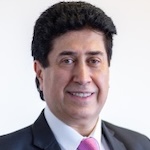
Dr. Kamal Alameh
In this talk, we introduce innovative Building-Integrated Photovoltaics (BIPV) modules developed by Alpha Solar Tech., which mimic conventional building materials, such as brick, wood panels, marble, granite, sandstones and tinted glass. These BIPV modules have the potential to convert high-rise buildings and urban infrastructures into stylish sustainable solar farms, thus enabling on-site clean energy generation, improving building sustainability ratings, decreasing carbon footprint and creating cost-savings.
Speaker Biography:
Professor Kamal Alameh previously worked as Director of Electron Science Research Institute and Director of WA Centre of Excellence for Micro Photonic Systems at Edith Cowan University (ECU). He is a world- renowned expert in optics and Nano-Photonics, having worked as a Professor in the World Class University (WCU) Gwangju Institute of Science and Technology (GIST), Korea. He is currently Adjunct Professor with the University of Melbourne, KCST-Kuwait and holds the position as lifetime guest Professor with Southeast University in Nanjing, China. Currently, he is the Chief Technical Officer of the WA startup company Alpha Solar Tech., working on the development of Building-Integrated Photovoltaic (BIPV) Systems that can be integrated directly into buildings and construction structures in place of ordinary building materials for on-site clean energy generation.
Professor Kamal Alameh previously worked as Director of Electron Science Research Institute and Director of WA Centre of Excellence for Micro Photonic Systems at Edith Cowan University (ECU). He is a world- renowned expert in optics and Nano-Photonics, having worked as a Professor in the World Class University (WCU) Gwangju Institute of Science and Technology (GIST), Korea. He is currently Adjunct Professor with the University of Melbourne, KCST-Kuwait and holds the position as lifetime guest Professor with Southeast University in Nanjing, China. Currently, he is the Chief Technical Officer of the WA startup company Alpha Solar Tech., working on the development of Building-Integrated Photovoltaic (BIPV) Systems that can be integrated directly into buildings and construction structures in place of ordinary building materials for on-site clean energy generation.
invited speakers:
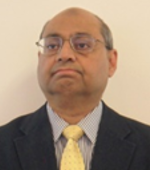
Dr. Ahmed S Khan
Professor of Electrical Engineering, Fulbright Specialist Scholar
Ex. Dean of the College of Engineering & Information Sciences
DeVry University, Addison, Illinois, USA
Title: Securing the Edge: An AI-Driven Detection of Intrinsic Cyber Threats via Current-Profiling in IoT Networks
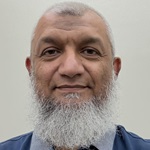
Dr. Uvais Qidwai
Associate Professor of Computer Engineering
Qatar University, Qatar
Title: Securing the Edge: An AI-Driven Detection of Intrinsic Cyber Threats via Current-Profiling in IoT Networks
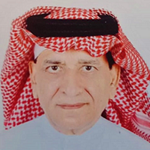
Dr. M. A. Gondal
Professor of Physics
King Fahd University of Petroleum & Minerals (KFUPM), Dhahran, Saudi Arabia
Title: Shaping a Sustainable Future: Harnessing Laser-Driven Synthesis of Advanced Materials for Renewable Energy Generation, Energy Storage, and Green Hydrogen
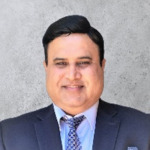
Dr. Khizar M. Bhutta
Program Leader – Manufacturing & Apprenticeship Solutions, Kinexus Group, Benton Harbor, Michigan, USA
Title: Enabling the AI Revolution ⎼ Advancing Hybrid Packaging Technology for Next Generation Multi-Die Systems for AI-Chip Manufacturing




 conference program
conference program


